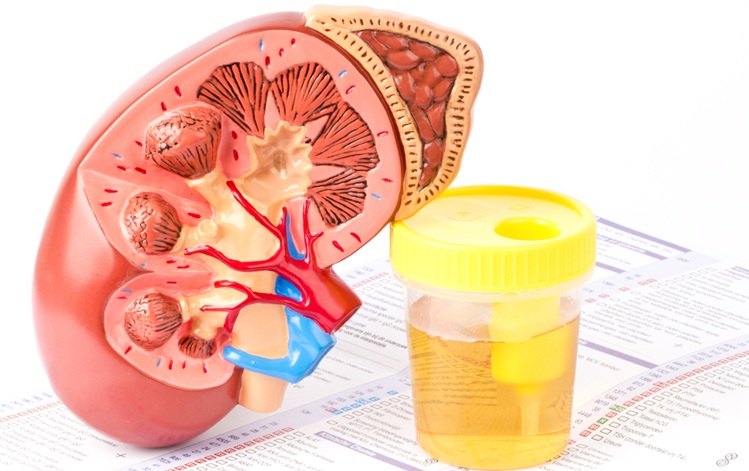Biochemical Abnormalities Among Celiac Disease Patients Referred for Antibody Testing
|
By LabMedica International staff writers Posted on 09 May 2022 |

Celiac disease (CD) is a chronic disease occurring in all age groups and affecting approximately 1% of the population, although many cases of CD remain undiagnosed. This condition is caused by an abnormal immune response in genetically susceptible individuals triggered by the ingestion of gluten proteins from wheat, rye and barley.
Celiac disease primarily affects the small intestine, often leading to malabsorption and micronutrient deficiencies. A small intestinal biopsy with recognition of villus atrophy and inflammation has been the gold standard for diagnosis; however, serological testing is increasingly used in the diagnostic process and screening for CD, mainly by the detection of CD-specific antibodies.
Clinical Scientists at the Copenhagen University Hospital (Copenhagen, Denmark) and their colleagues included in an observational cohort study 706 individuals that had received a positive CD antibody result; 72.7% were women and the mean age was 26 years. The team compared the results of those with CD-positive antibodies with individuals with CD-negative antibodies.
Tissue transglutaminase antibody (IgA) (TTG-IgA), tissue transglutaminase antibody (IgG) (TTG-IgG), deamidated gliadin peptide antibody (IgA) (DGP-IgA) and deamidated gliadin peptide antibody (IgG) (DGP-IgG) were measured in serum by fluorescence enzyme immunoassay (EIA) on the UniCAP 100 and ImmunoCAP 250 platforms (Phadia Laboratory Systems, Thermo Fisher Scientific, Hvidovre, Denmark).
Other variables used from the CopLab database were hemoglobin, erythrocytes, mean corpuscular volume (MCV), mean corpuscular hemoglobin concentration (MCHC), transferrin, hematocrit, ferritin, alanine transaminase (ALAT), alkaline phosphate, 25-OH vitamin D, folic acid, cobalamin, C-reactive protein (CRP), reticulocyte, mean corpuscular hemoglobin (ReticMCH), erythrocyte volume, relative distribution width (RDW), and immunoglobulin A.
The investigators reported a most remarkable difference between the groups was the markedly lower ferritin among CD antibody-positive individuals compared with CD antibody-negative individuals (women: 13.8 µg/L versus. 35.9 µg/L; men: 34.3 µg/L versus 80.4 µg/L), Also, CD antibody-positive individuals had a tendency for lower hemoglobin (women: 7.8 mmol/L versus 8.1 mmol/L; men: 8.5 mmol/L versus 8.8 mmol/L). The team reported lower cobalamin and folic acid levels and higher levels of transferrin, alanine transaminase and alkaline phosphate among CD antibody-positive individuals.
Compared with CD-negative individuals, the scientists reported that a greater proportion of tests among CD antibody-positive individuals exhibited hemoglobin (10.2% versus 2.7%), mean corpuscular volume (7.1% versus 2.9%), mean corpuscular hemoglobin concentration (6.8% versus 1.2%) and ferritin (37.6% versus7.6%) below the reference level, while transferrin (20.7% versus 9.5%) was above the reference interval. CD antibody-positive individuals were also more likely to have a deficiency for cobalamin and folic acid.
Line Lund Kårhus, MD, PhD, the lead author of the study, said, “This study identified several biochemical abnormalities associated with celiac disease (CD) antibody positivity in a primary care setting among individuals referred to CD antibody testing. The pattern of abnormalities suggested that micronutrient deficiencies were prevalent among CD antibody-positive individuals.”
The authors concluded that their study showed more measurements below the reference interval for hemoglobin, MCV, MCHC, ferritin, cobalamin and folic acid among the individuals with a positive CD antibody test. The pattern of the included biomarkers suggested that micronutrient deficiencies were common among CD antibody-positive individuals and confirmed malabsorption as a sign of CD. The study was published on April 18, 2022 in the journal Scientific Reports.
Related Links:
Copenhagen University Hospital
Phadia Laboratory Systems
Latest Hematology News
- ADLM’s New Coagulation Testing Guidance to Improve Care for Patients on Blood Thinners
- Viscoelastic Testing Could Improve Treatment of Maternal Hemorrhage
- Pioneering Model Measures Radiation Exposure in Blood for Precise Cancer Treatments
- Platelets Could Improve Early and Minimally Invasive Detection of Cancer
- Portable and Disposable Device Obtains Platelet-Rich Plasma Without Complex Equipment
- Disposable Cartridge-Based Test Delivers Rapid and Accurate CBC Results
- First Point-of-Care Heparin Monitoring Test Provides Results in Under 15 Minutes

- New Scoring System Predicts Risk of Developing Cancer from Common Blood Disorder
- Non-Invasive Prenatal Test for Fetal RhD Status Demonstrates 100% Accuracy
- WBC Count Could Predict Severity of COVID-19 Symptoms
- New Platelet Counting Technology to Help Labs Prevent Diagnosis Errors
- Streamlined Approach to Testing for Heparin-Induced Thrombocytopenia Improves Diagnostic Accuracy
- POC Hemostasis System Could Help Prevent Maternal Deaths
- New Test Assesses Oxygen Delivering Ability of Red Blood Cells by Measuring Their Shape
- Personalized CBC Testing Could Help Diagnose Early-Stage Diseases in Healthy Individuals
- Non-Invasive Test Solution Determines Fetal RhD Status from Maternal Plasma
Channels
Molecular Diagnostics
view channel
Urine Test Detects Early Stage Pancreatic Cancer
Pancreatic cancer remains among the hardest cancers to detect early. In the UK, around 10,000 people are diagnosed each year, but only 5% survive beyond five years. Late diagnosis is a major factor—more... Read more
Genomic Test Could Reduce Lymph Node Biopsy Surgery in Melanoma Patients
Accurately determining whether melanoma has spread to the lymph nodes is crucial for guiding treatment decisions, yet the standard procedure—sentinel lymph node biopsy—remains invasive, costly, and unnecessary... Read moreHematology
view channel
ADLM’s New Coagulation Testing Guidance to Improve Care for Patients on Blood Thinners
Direct oral anticoagulants (DOACs) are one of the most common types of blood thinners. Patients take them to prevent a host of complications that could arise from blood clotting, including stroke, deep... Read more
Viscoelastic Testing Could Improve Treatment of Maternal Hemorrhage
Postpartum hemorrhage, severe bleeding after childbirth, remains one of the leading causes of maternal mortality worldwide, yet many of these deaths are preventable. Standard care can be hindered by delays... Read more
Pioneering Model Measures Radiation Exposure in Blood for Precise Cancer Treatments
Scientists have long focused on protecting organs near tumors during radiotherapy, but blood — a vital, circulating tissue — has largely been excluded from dose calculations. Each blood cell passing through... Read moreImmunology
view channel
Blood-Based Liquid Biopsy Model Analyzes Immunotherapy Effectiveness
Immunotherapy has revolutionized cancer care by harnessing the immune system to fight tumors, yet predicting who will benefit remains a major challenge. Many patients undergo costly and taxing treatment... Read more
Signature Genes Predict T-Cell Expansion in Cancer Immunotherapy
Modern cancer immunotherapies rely on the ability of CD8⁺ T cells to rapidly multiply within tumors, generating the immune force needed to eliminate cancer cells. However, the biological triggers behind... Read moreMicrobiology
view channel
High-Throughput Enteric Panels Detect Multiple GI Bacterial Infections from Single Stool Swab Sample
Gastrointestinal (GI) infections are among the most common causes of illness worldwide, leading to over 1.7 million deaths annually and placing a heavy burden on healthcare systems. Conventional diagnostic... Read more
Fast Noninvasive Bedside Test Uses Sugar Fingerprint to Detect Fungal Infections
Candida bloodstream infections are a growing global health threat, causing an estimated 6 million cases and 3.8 million deaths annually. Hospitals are particularly vulnerable, as weakened patients after... Read morePathology
view channel
New Molecular Analysis Tool to Improve Disease Diagnosis
Accurately distinguishing between similar biomolecules such as proteins is vital for biomedical research and diagnostics, yet existing analytical tools often fail to detect subtle structural or compositional... Read more
Tears Offer Noninvasive Alternative for Diagnosing Neurodegenerative Diseases
Diagnosing and monitoring eye and neurodegenerative diseases often requires invasive procedures to access ocular fluids. Ocular fluids like aqueous humor and vitreous humor contain valuable molecular information... Read moreTechnology
view channel
Cell-Sorting Device Uses Electromagnetic Levitation to Precisely Direct Cell Movement
Sorting different cell types—such as cancerous versus healthy or live versus dead cells—is a critical task in biology and medicine. However, conventional methods often require labeling, chemical exposure,... Read more
Embedded GPU Platform Enables Rapid Blood Profiling for POC Diagnostics
Blood tests remain a cornerstone of medical diagnostics, but traditional imaging and analysis methods can be slow, costly, and reliant on dyes or contrast agents. Now, scientists have developed a real-time,... Read moreIndustry
view channel
Qiagen Acquires Single-Cell Omics Firm Parse Biosciences
QIAGEN (Venlo, Netherlands) has entered into a definitive agreement to fully acquire Parse Biosciences (Seattle, WA, USA), a provider of scalable, instrument-free solutions for single-cell research.... Read more
Puritan Medical Products Showcasing Innovation at AMP2025 in Boston
Puritan Medical Products (Guilford, ME, USA), the world’s most trusted manufacturer of swabs and specimen collection devices, is set to exhibit at AMP2025 in Boston, Massachusetts, from November 11–15.... Read more
Advanced Instruments Merged Under Nova Biomedical Name
Advanced Instruments (Norwood, MA, USA) and Nova Biomedical (Waltham, MA, USA) are now officially doing business under a single, unified brand. This transformation is expected to deliver greater value... Read more








 (3) (1).png)













